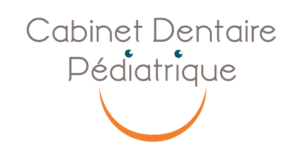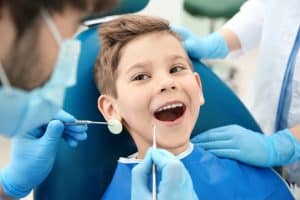Hypomineralization of permanent incisors and first molars (HIM) is a dental disease that affects between 15 and 20 % of children aged 6 to 10 years in France.
It can reach the first four molars or the permanent incisors of the child. Affected teeth show stains of different sizes and colors. Without proper treatment, further complications may occur.
When should I see an MIH dentist?
Consultation with a pedodontist should take place as soon as possible. Many parents do not notice IHD when their child's teeth are growing. The later a professional is consulted, the more difficult it is to treat MIH.
Between the ages of 6 and 9, a child's permanent teeth begin to erupt. It is during this period that one must be particularly vigilant. If white, yellow or brown spots appear, it is important to consult a pedodontist.
In case of hypersensitivity in children when brushing their teeth or when exposed to heat or cold, a visit to a professional is also necessary.
What treatment for MIH?
The treatment of MIH in children is relatively complex for several reasons:
- The procedures can be painful because local anesthesia is less effective,
- More regular visits to the dental specialist are necessary,
- The pain increases, more and more over time.
All of these issues tend to create a phobia in children when they go to the dentist.
MIH: therapeutic and orthodontic treatments
Therapeutic and orthodontic care can be used to soothe the child and effectively treat the disease. As this is a specific disease that mainly affects young children, the intervention of a dentist specialized in MIH is required.
A pedodontist is able to adapt dental care to reduce anxiety and pain during treatment. This can be done by using a dental anesthetic called osteo-central anesthesia or conscious sedation with nitrous oxide. Both of these methods allow the child to relax completely during the dental treatment.
In practice, the dentist performs several dental procedures to treat the teeth affected by MIH:
- Application of fluoride every 6 months,
- Filling of grooves, pits and fissures in molars,
- Stain treatment.
What are the right things to do?
If your child's teeth are affected by IHD, it is essential to adopt a few good habits to improve oral hygiene:
- Brush your teeth at least twice a day after eating,
- Monitor that the child does not snack during the day,
- Use a soft toothbrush and replace it every 6 months minimum,
- Teach the child to brush properly,
- Monitor children's tooth brushing until age 10,
- Consult a pedodontist every 6 months.
Consequences of MIH for the patient
If MIH is not treated effectively and preventively, more serious dental problems can occur.
Dental hypersensitivity in children can cause severe pain when in contact with hot and cold. In addition, this pain can also occur when brushing and chewing.
Affected teeth decay and become brittle much more quickly. If left untreated, weakened teeth can break.
Teeth affected by MIH are more difficult to anesthetize locally and make dental work painful.
In order to avoid future complications, it is essential to consult a pedodontist regularly as soon as the child reaches 3 years of age. Regular check-ups combined with preventive care will ensure optimal oral health for the child.


